Decorating Window Sills with Plants: How to Style 5 Ways
Decorating window sills with plants is one of the easiest ways to bring life and color into your home. Your window sills are perfect spots for green styling that makes any room feel fresh and welcoming. These small spaces can become beautiful focal points that catch everyone’s eye.
Window sill plant styling matters because it connects your indoor and outdoor spaces. Plants on window sills create a natural bridge between your home and the world outside. They also help clean your air, boost your mood, and add personality to every room.
The benefits of decorating window sills with plants go beyond just looks. Plants help reduce stress, improve air quality, and create a calming atmosphere. They’re also budget-friendly decor that grows and changes over time. Plus, window sills get natural light, making them ideal spots for most houseplants.
In this guide, we’ll explore five different ways to style your window sills with plants. Each method works for different spaces, budgets, and skill levels. Whether you’re a plant beginner or have a green thumb, you’ll find ideas that work for your home.
Table of Contents
Table of Contents
Understanding Window Sill Plant Basics
Before you start decorating window sills with plants, you need to understand your space. Every windowsill is different, and knowing yours will help you pick the right plants and styling approach.
Assessing Your Window Sill Space
The first step in successful window sill decorating is measuring your space. You need to know how much room you have to work with.
Measuring depth and width considerations is crucial for plant success. Most window sills are 4 to 8 inches deep. This depth determines what size pots you can use and how many plants will fit. Width varies from window to window, but most range from 24 to 60 inches wide.
Here’s a helpful measurement guide:
| Window Sill Depth | Best Pot Size | Plant Options |
|---|---|---|
| 3-4 inches | 2-3 inch pots | Small succulents, air plants |
| 5-6 inches | 4-5 inch pots | Small houseplants, herbs |
| 7-8 inches | 6-7 inch pots | Medium plants, trailing varieties |
| 9+ inches | 8+ inch pots | Large plants, multiple arrangements |
Light exposure evaluation helps you choose plants that will thrive. Watch your windowsill throughout the day. Note how many hours of direct sunlight it gets. South-facing windows get the most light, while north-facing windows get the least.
Weight capacity limitations matter more than most people think. Window sills aren’t built to hold unlimited weight. A typical window sill can safely hold 10 to 20 pounds. Heavy pots filled with wet soil can add up quickly, so plan accordingly.
Choosing the Right Plants for Window Sills
The key to successful window sill decorating is picking plants that match your conditions. Not every plant will work in every window.
Low-light vs bright-light plant options depend on your window’s direction and any obstructions outside. For low-light windows, consider pothos, snake plants, or ZZ plants. For bright windows, try succulents, herbs, or flowering plants like African violets.
Size-appropriate plant varieties prevent overcrowding and ensure healthy growth. Small plants like string of pearls work well in shallow sills. Medium plants like spider plants fit deeper sills. Avoid plants that grow too tall or wide for your space.
Maintenance level considerations help you choose plants you’ll care for. If you travel frequently or often forget to water, consider drought-tolerant plants like succulents. If you enjoy daily plant care, herbs or flowering plants might be perfect.
How to choose plants for a windowsill
Method 1 – Layered Height Styling
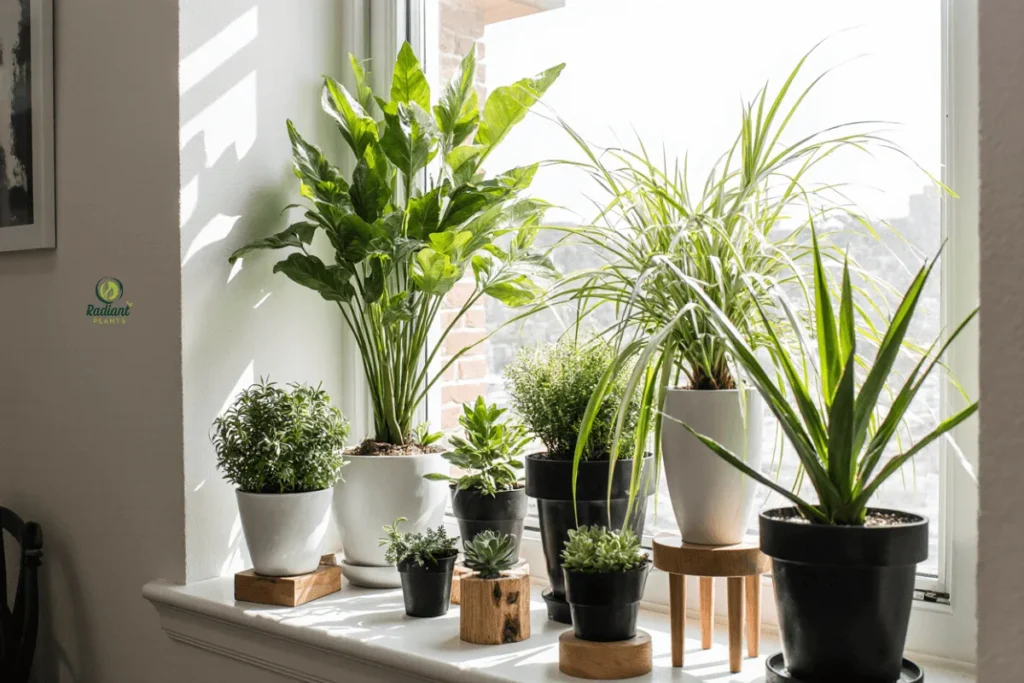
Layered height styling creates the most visual impact when decorating window sills with plants. This method utilizes plants of varying heights to create an engaging display that captures the eye.
Creating Visual Interest with Plant Heights
Tall, medium, and short plant combinations work like a natural staircase. Place your tallest plant in the back, medium plants in the middle, and shortest ones in front. This creates depth and prevents any plant from hiding behind another.
The rule of three works perfectly here. Use one tall plant, two medium plants, and three small plants for a balanced look. This odd-number grouping feels natural and pleasing to the eye.
Using plant stands and risers effectively adds even more height variation. Small wooden blocks, books, or decorative stands can lift shorter plants. This technique helps every plant get adequate light and creates a more dynamic display.
Decorating window sills with plants of varying textures makes your arrangement more interesting. Mix smooth-leafed plants with fuzzy ones, or combine spiky succulents with flowing ferns. Different leaf shapes and textures create visual excitement.
Best Plants for Layered Arrangements
Recommended plant combinations that work well together include:
- Back row (tall): Snake plant, peace lily, or rubber tree
- Middle row (medium): Spider plant, pothos, or begonia
- Front row (short): Succulents, small ferns, or air plants
Spacing guidelines for optimal growth prevent plants from competing for light and air. Leave 2-3 inches between small plants and 4-6 inches between larger ones. This spacing allows air to circulate and prevents disease.
Method 2 – Minimalist Single Statement Piece
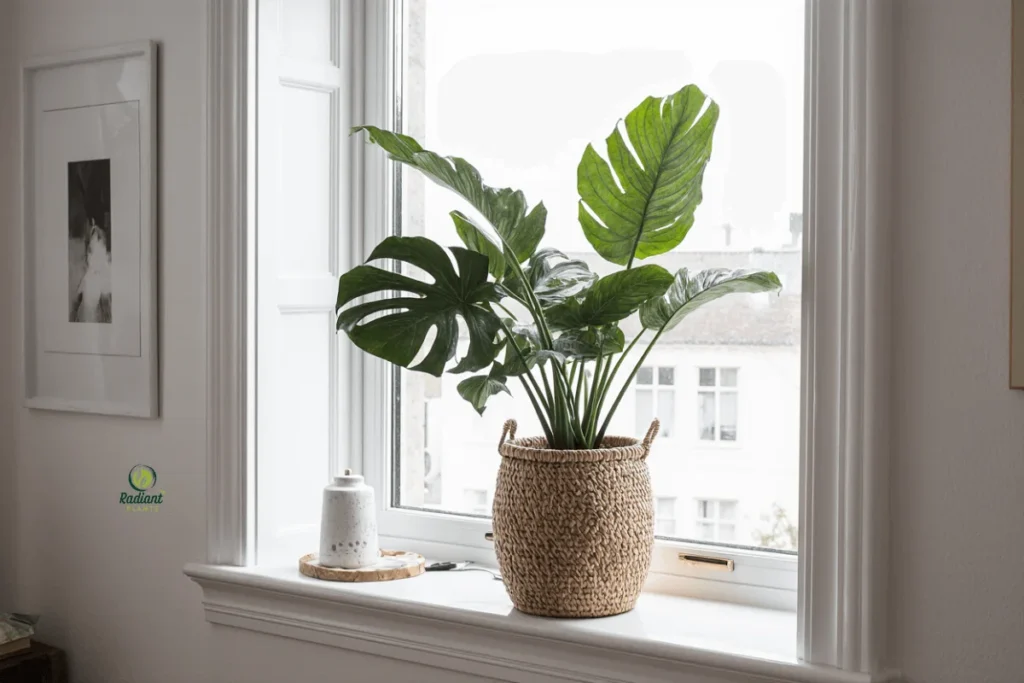
Sometimes, less is more when decorating window sills with plants. A single, beautiful plant can create more impact than a crowded arrangement.
Choosing One Show-Stopping Plant
Large statement plants for wide sills work best when you have plenty of space. A single, gorgeous plant in a beautiful pot can transform your entire window area. This approach works especially well in modern or minimalist homes.
Consider these statement plants:
- Fiddle leaf fig (if you have height)
- Large Monstera deliciosa
- Impressive snake plant
- Full, trailing pothos in a hanging basket
Decorating window sills with plants as focal points means choosing plants with interesting shapes, colors, or textures. The plant becomes art that happens to be alive. This method works great for people who prefer clean, uncluttered looks.
Complementary pot selection becomes extra important with single plants. Your pot choice affects the whole room’s style. A sleek ceramic pot suits modern spaces, while a woven basket fits bohemian style.
Styling Tips for Maximum Impact
Positioning for the best visual effect usually means centering your plant on the sill. However, off-center placement can work if it balances other room elements. Consider your window’s relationship to furniture and wall art.
Supporting accessories and elements should be minimal with this approach. Maybe add one small decorative object or a simple plant saucer. The goal is to let your statement plant shine without competition.
Method 3 – Trailing Plant Cascades
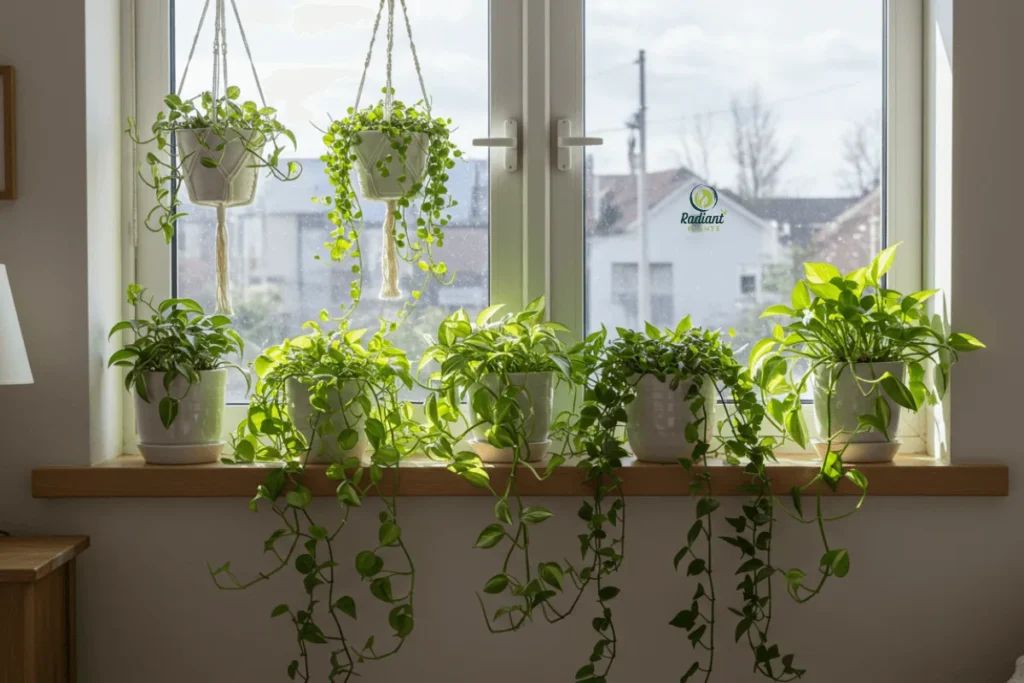
Trailing plants create beautiful, flowing displays when decorating window sills with plants. These cascading varieties add movement and softness to your windows.
Selecting Cascading Plant Varieties
Best trailing plants for window sills include options for every light condition:
| Plant Name | Light Needs | Care Level | Cascade Length |
|---|---|---|---|
| Pothos | Low to bright | Easy | 3-6 feet |
| String of Hearts | Bright | Easy | 2-4 feet |
| String of Pearls | Bright | Moderate | 1-3 feet |
| Tradescantia | Medium to bright | Easy | 2-5 feet |
| English Ivy | Medium | Moderate | 3-8 feet |
Growth pattern considerations help you plan your display. Some trailing plants grow quickly and need regular pruning. Others grow slowly and maintain their shape longer. Fast growers like pothos need trimming every few months.
Decorating window sills with plants that drape naturally creates the most authentic look. Don’t force plants into unnatural positions. Let them follow their natural growth patterns for the best results.
Installation and Maintenance Tips
Proper hanging and support methods keep your plants safe and healthy. Use sturdy hooks rated for more weight than your plant needs. Ceiling hooks work for very long trails, while window frame hooks suit shorter cascades.
Pruning and care requirements for trailing plants are usually simple. Trim brown or yellow leaves regularly. Pinch growing tips to encourage fuller growth. Most trailing plants root easily in water, so you can propagate your cuttings.
Method 4 – Herb Garden Functionality

Decorating window sills with plants becomes even better when those plants are useful. Herb gardens combine beauty with function, giving you fresh ingredients steps from your kitchen.
Creating Edible Window Displays
Kitchen-friendly herb selections should match your cooking style. If you love Italian food, grow basil, oregano, and thyme. For Mexican dishes, try cilantro and hot peppers. Mediterranean cooking calls for rosemary and sage.
Popular herbs for window sills include:
- Basil (needs warm, bright light)
- Mint (grows in most conditions)
- Chives (very easy to grow)
- Parsley (tolerates some shade)
- Oregano (loves bright light)
- Thyme (drought-tolerant)
Decorating window sills with plants you can use makes cooking more enjoyable. Fresh herbs taste better than dried ones and cost much less than store-bought. Plus, you’ll never run out of garnishes for your dishes.
Container options for herbs should have good drainage and be food-safe. Terracotta pots work well and look natural. Ceramic pots with drainage holes are also good choices. Avoid metal containers that might affect taste.
Harvesting and Care Guidelines
Maintenance schedules for healthy herbs keep your plants producing. Most herbs need water when the top inch of soil feels dry. This usually means watering every 2-3 days in bright sunlight.
Rotation and replacement strategies ensure continuous harvests. Plant new herbs every 4-6 weeks so you always have fresh ones ready. Some herbs like basil need replanting seasonally, while others like rosemary can last for years.
Method 5 – Seasonal Rotation System
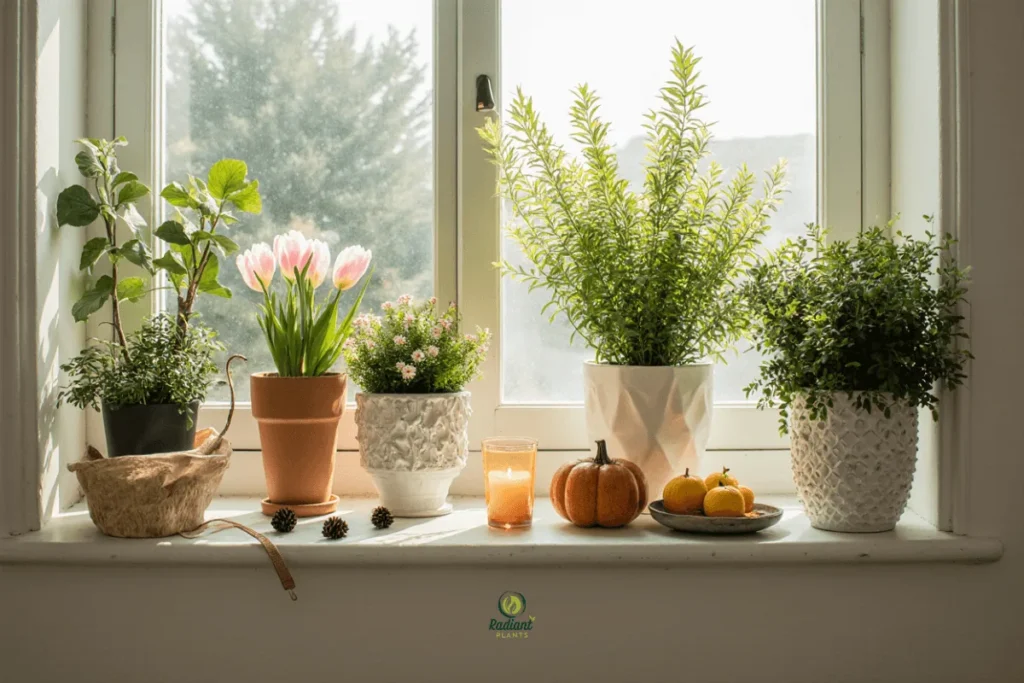
Decorating window sills with plants can change with the seasons. This approach keeps your displays fresh and interesting all year long.
Planning Year-Round Displays
Spring, summer, fall, and winter plant choices reflect each season’s character:
| Season | Plant Options | Color Themes | Special Features |
|---|---|---|---|
| Spring | Deep greens, whites, and reds | Fresh greens, pastels | Bulbs and emerging plants |
| Summer | Flowering plants, herbs | Bright colors | Full, lush growth |
| Fall | Mums, small pumpkins, colorful leaves | Oranges, reds, yellows | Seasonal decorations |
| Winter | Evergreens, amaryllis, paperwhites | Deep greens, whites, reds | Holiday themes |
Decorating window sills with plants for each season keeps your home feeling current and connected to nature’s cycles. This approach works especially well if you enjoy changing your decor regularly.
Storage solutions for off-season plants help you reuse plants and decorations. A cool basement or garage can store dormant bulbs. A spare room can house plants that need rest periods.
Transition Strategies
Timing plant changes effectively depends on your climate and plant types. Start spring displays in late February or early March. Summer plants can go out after the last frost. Fall displays work from September through November.
Budget-friendly rotation methods make seasonal decorating affordable. Buy bulbs in bulk when they’re cheap. Grow your herbs from seeds. Collect interesting branches and leaves from your yard.
Essential Styling Tips and Tricks
Success in decorating window sills with plants comes from attention to detail. These styling tips help create professional-looking displays.
Pot and Container Selection
Materials that complement window frames create cohesive looks. White ceramic pots work with white window trim. Natural wood planters suit rustic windows. Metal containers complement modern frames.
Consider these material options:
- Terracotta: Classic, breathable, affordable
- Ceramic: Decorative, holds moisture well, many colors
- Plastic: Lightweight, inexpensive, good for hanging
- Wood: Natural look, good insulation, can rot over time
- Metal: Modern look, lightweight, can get hot in the sun
Drainage considerations for indoor use prevent water damage to your window sills. All pots need drainage holes. Use saucers to catch excess water, but empty them regularly to prevent root rot.
Color coordination with existing decor ties your plant display into your room’s overall design. Pick pot colors that match or complement your window treatments, walls, or furniture.
Common Mistakes to Avoid
Overcrowding issues happen when you try to fit too many plants in too small a space. Plants need room to grow and air to circulate. Crowded plants are more likely to get diseases and pests.
Watering and drainage problems cause most plant deaths on window sills. Overwatering is more common than underwatering. Check soil moisture before watering, and make sure excess water can drain away.
Light exposure errors happen when you don’t match plants to their light needs. A sun-loving succulent will struggle in a north window. A shade plant will burn in a southern exposure.
Maintenance and Long-Term Success
Keeping your window sill plants healthy requires ongoing attention. Good maintenance keeps your displays looking great all year.
Ongoing Care Requirements
Watering schedules and techniques vary by plant type and season. Most window sill plants need water when the top inch of soil feels dry. Water thoroughly until you see drainage, then empty saucers after 30 minutes.
Fertilizing and repotting keep plants healthy and growing. Most houseplants need monthly feeding during the growing season (spring and summer). Repot when roots outgrow containers or soil stays soggy.
Pest prevention strategies include regular inspection and good plant hygiene. Check plants weekly for signs of insects or disease. Remove dead leaves promptly. Isolate new plants for a few weeks before adding them to your display.
Troubleshooting Common Issues
Yellowing leaves and overwatering often go together. Yellow leaves usually mean too much water or poor drainage. Let the soil dry out more between waterings and check that the drainage holes aren’t blocked.
Leggy growth and insufficient light make plants stretch toward windows. Move plants closer to light or add a grow light. Pinch growing tips to encourage bushier growth.
Seasonal care adjustments account for changing conditions. Plants need less water in winter when growth slows. They may need more humidity when heating systems dry the air.
FAQs About Decorating Window Sills with Plants
How many plants can I fit on my windowsill when decorating window sills with plants?
This depends on your skill size and plant choices. A typical 36-inch sill can hold 3-5 small plants or 1-2 larger ones. Leave space for air circulation and growth.
What’s the best way to start decorating window sills with plants if I’m a beginner?
Start with easy-care plants like pothos, snake plants, or succulents. Choose plants that match your window’s light conditions. Begin with just 2-3 plants and expand as you gain confidence.
How do I prevent water damage when decorating window sills with plants?
Always use pots with drainage holes and saucers. Water plants over a sink when possible, then return them to saucers. Check saucers regularly and empty standing water.
Can I use artificial plants when decorating window sills with plants?
While artificial plants require no care, they don’t provide the air-cleaning benefits or natural beauty of live plants. If you must use artificial plants, choose high-quality ones and mix them with real plants for the best results.
What should I do if my windowsill gets too hot for plants?
Move plants back from the glass during very hot days. Use sheer curtains to filter intense light. Choose heat-tolerant plants like succulents or cacti for very sunny windows.
Conclusion
Decorating window sills with plants transforms your home with natural beauty and fresh energy. We’ve covered five different styling methods that work for any space, budget, or skill level.
The layered height method creates dramatic displays with visual depth. Single statement pieces offer elegant simplicity. Trailing cascades add flowing movement. Herb gardens combine beauty with function. Seasonal rotations keep displays fresh all year.
Remember that successful window sill decorating starts with understanding your space and choosing appropriate plants. Take time to assess your light conditions, measure your sills, and select plants that match your care abilities.
Start small with just one or two plants, then expand your displays as you gain experience. Don’t be afraid to experiment with different arrangements and plant combinations. The best window sills reflect your style and make you happy every time you see them.
Ready to start decorating window sills with plants in your home? Choose one method from this guide and begin today. Pick up a few plants that match your window conditions, grab some attractive pots, and start creating your green styling masterpiece. Your windows – and your home – will never look the same!

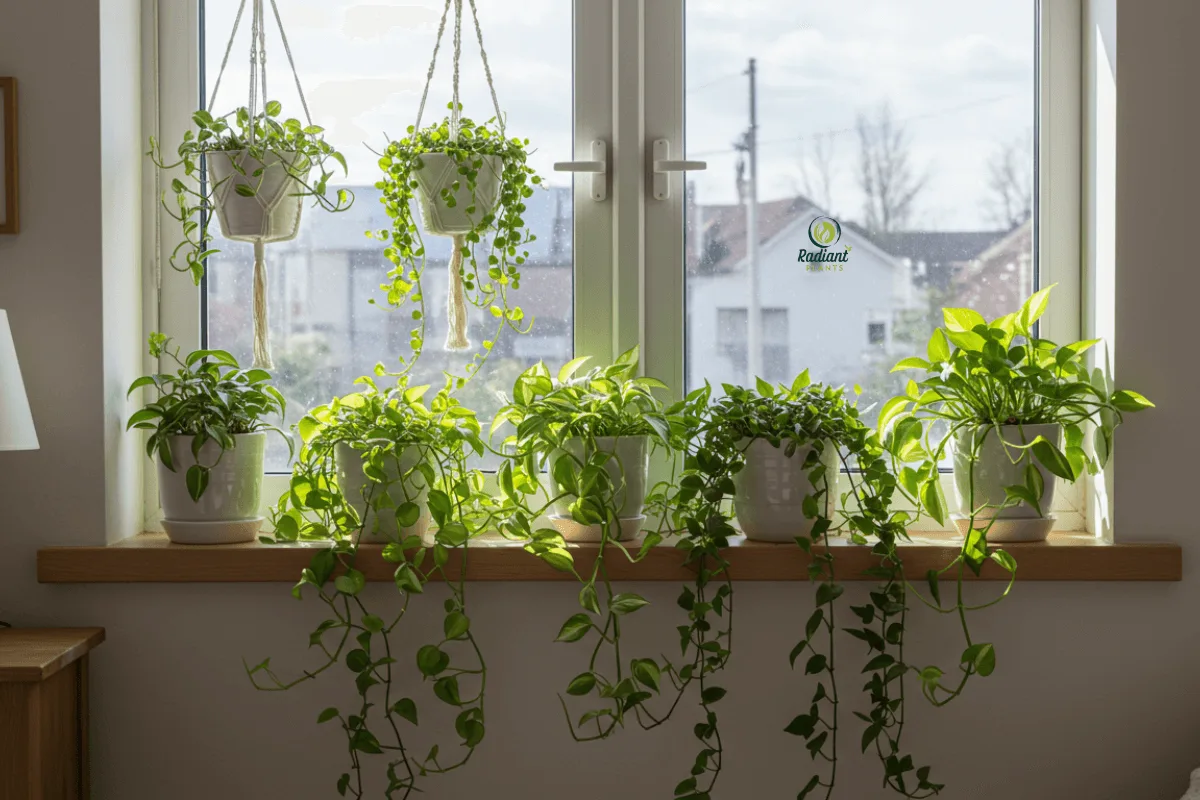
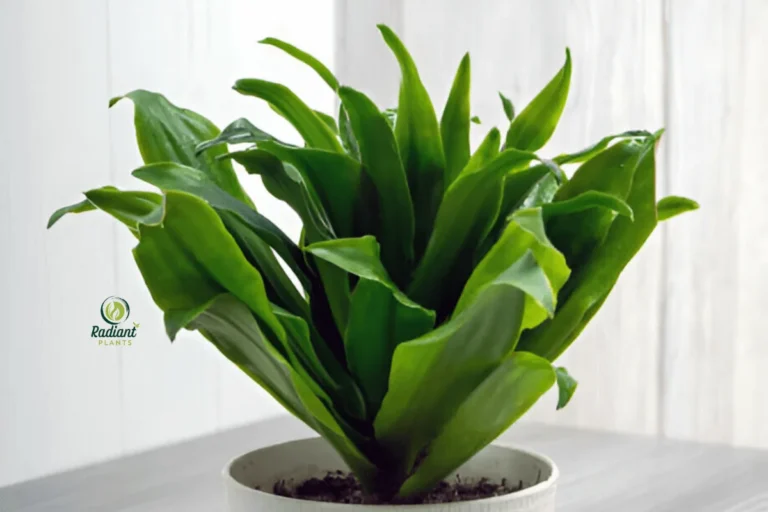
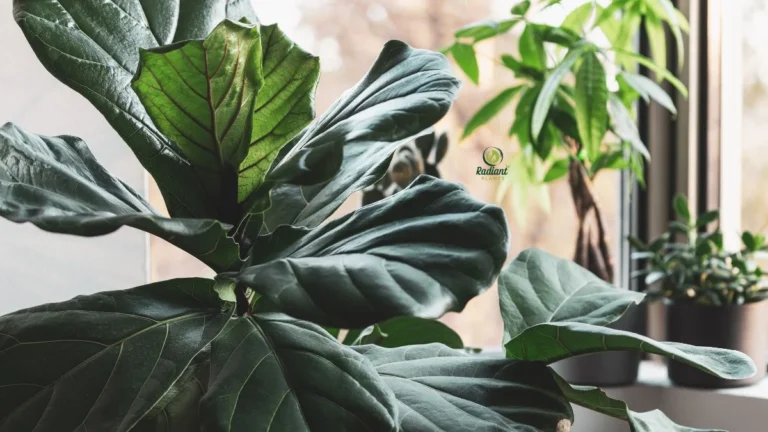
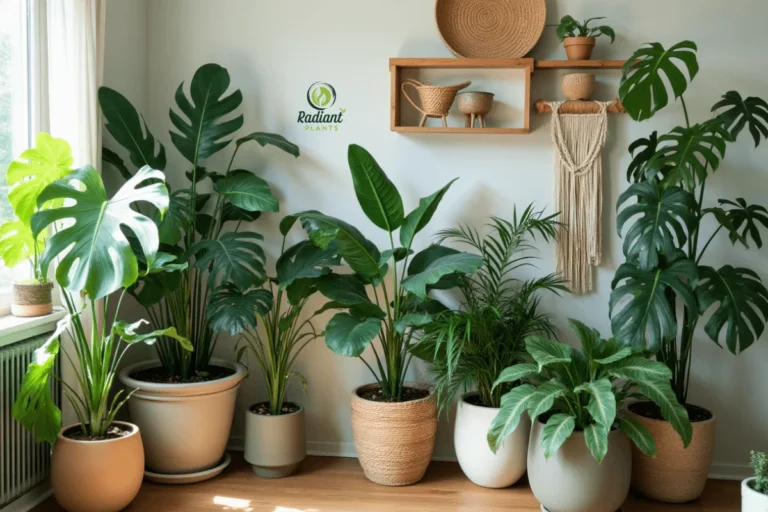

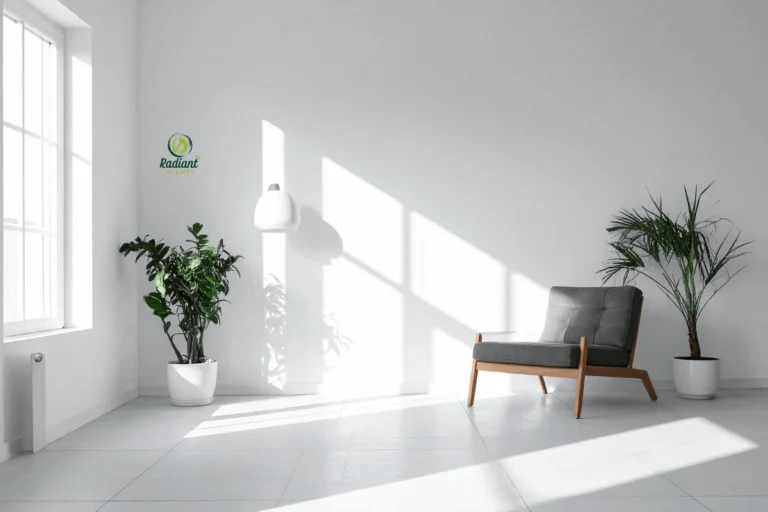
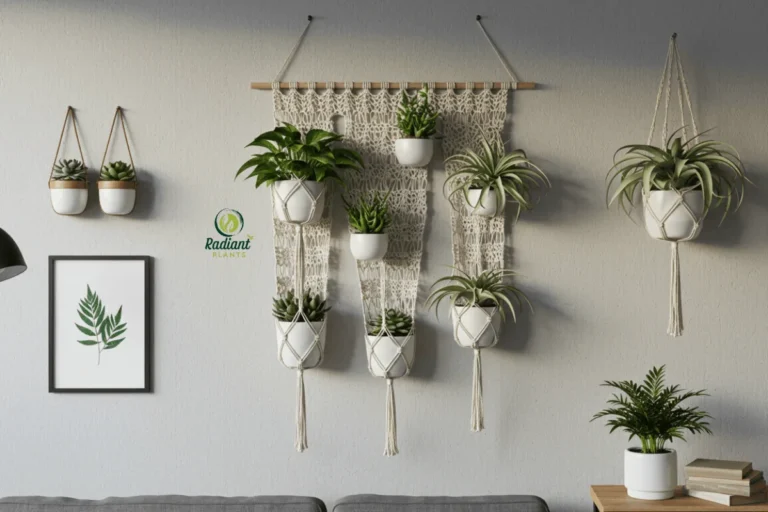
One Comment